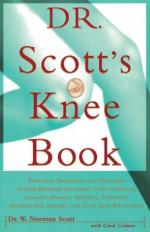|
This section contains 191 words (approx. 1 page at 300 words per page) |
Fibrocartilage is one of three basic forms of cartilage in the human body. The extremely resilient tissue consists of relatively inelastic bundles of collagen fibers. Fibrocartilage has a limited distribution in the body. It is found in the intervertebral disks, the synovial joint between the pubic bone in the pelvis and around the edges of articular cavities, such as the shoulder joint.
The overall appearance of fibrocartilage closely resembles dense connective tissue, and many researchers regard it to be a transitional tissue. White, or mature, fibrocartilage appears grayish-white and takes on a stiff leathery feel. It functions as a shock absorber between vertebrae and helps cushion bones when we walk or run. Fibrocartilage also helps deepen joint sockets so dislocation is less possible. The amount of fibrocartilage increases with age.
White fibrocartilage comes in four groups: interarticular, connecting, circumferential, and stratiform. Interarticular fibrocartilage protects the joints subjected to frequent movement, such as the jaw, wrist, and knee. Connecting fibrocartilage is found between each vertebra. Circumferential fibrocartilage protects the edges of the hip and shoulder cavities. Stratiform fibrocartilage helps lubricate the grooves through which the tendons of certain muscles glide.
|
This section contains 191 words (approx. 1 page at 300 words per page) |


